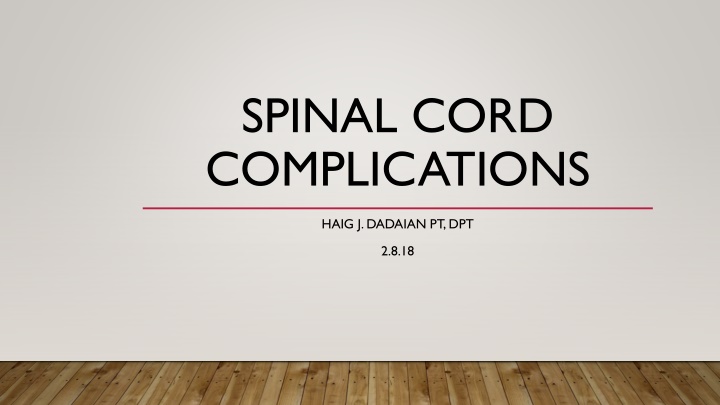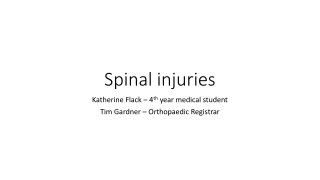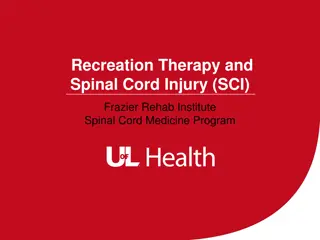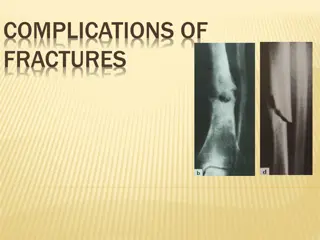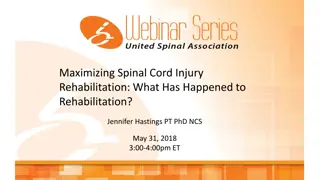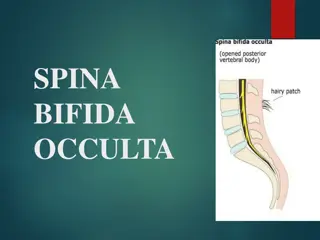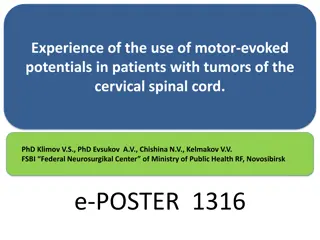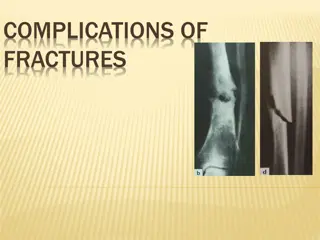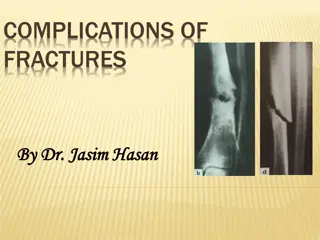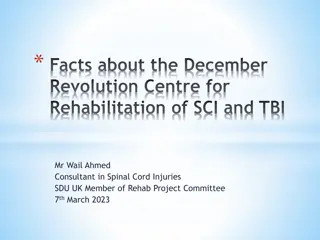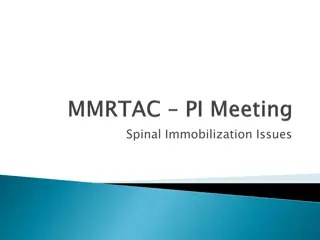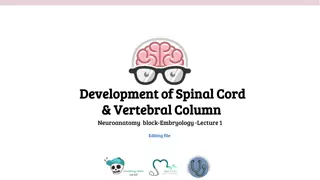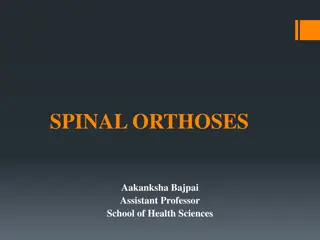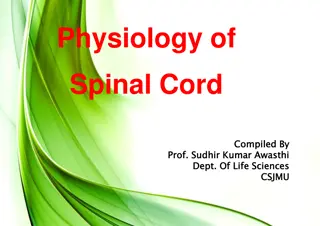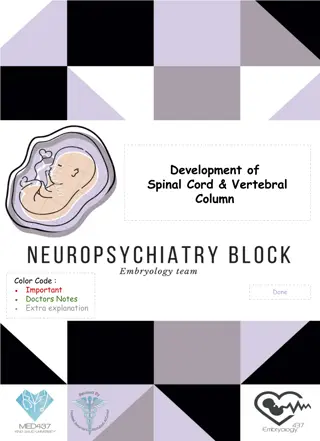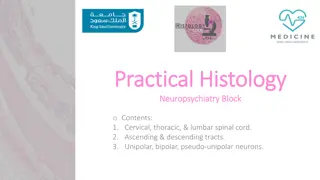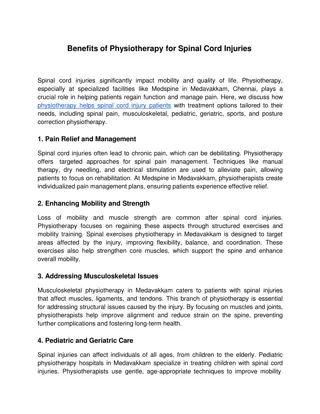Spinal Cord Complications and Management
Acute autonomic dysreflexia, postural hypotension, heterotopic ossification, hypercalcemia, DVT/PE, chronic osteoporosis, Charcot spine, renal complications, and more are common complications of spinal cord injuries. Understanding the symptoms and treatments for these complications is vital in managing the overall health of patients.
Download Presentation

Please find below an Image/Link to download the presentation.
The content on the website is provided AS IS for your information and personal use only. It may not be sold, licensed, or shared on other websites without obtaining consent from the author.If you encounter any issues during the download, it is possible that the publisher has removed the file from their server.
You are allowed to download the files provided on this website for personal or commercial use, subject to the condition that they are used lawfully. All files are the property of their respective owners.
The content on the website is provided AS IS for your information and personal use only. It may not be sold, licensed, or shared on other websites without obtaining consent from the author.
E N D
Presentation Transcript
SPINAL CORD COMPLICATIONS HAIG J. DADAIAN PT, DPT 2.8.18
COMPLICATIONS Acute Autonomic Dysreflexia Postural hypotension Heterotopic Ossification Hypercalcemia DVT/PE Chronic Osteoporosis and pathological fractures Charcot spine Renal complications Cardiopulmonary/Metabolic Over use syndromes: Rotator cuff,/shoulders, CTS, CMC arthritis, elbows
ACUTE AUTONOMIC DYSREFLEXIA Sympathetic- T1-L3 Splanic outflow T6 Parasympatethic- Brainstem/Sacral Autonomic Dysreflexia The sympathetic and parasympathetic nervous system are not coordinated High blood pressure/Bradycardia Pounding headache, sweating, sense of non-well being, Guttman s sign Any noxious stimuli below the level of the lesion
ACUTE POSTURAL HYPOTENSION SCI patients don t have the autonomic postural responses to gravity. Their blood vessels don t contract and relax as responsively as able bodied When going from a horizontal position to a vertical position, gravity causes the blood to pool in the lower limbs. Blood is diverted away from heart/brain. Patient becomes dizzy, syncope, hypotension (sometimes tachycardic) Treatment: Lie back down, Abdominal binders, compression hose, tilt recline wheelchairs Medications: Pseuduofed, midodrine.
ACUTE HETEROTOPIC OSSIFICATION Spinal cord injury causes bone homeostasis dysregulation During the acute phase, bone begins to form in places it doesn t belong especially joints First sign is reduced range of motion, warmth, redness, Therapists are often the first to notice If left unabated, can lead to fusion of the joint in a non functional position Treatment controversial Range of motion, ROM, ROM ROM (not forceful) Etidrionate Anti-inflammatories Radtiation Surgery
ACUTE HYPERCALCEMIA During the acute phase of SCI, bone metabolism is suddenly dysregulated. Calcium is released from the bones-SCI patients rapidly develop osteoporosis Large concentration of calcium is released in to the blood stream. Patient becomes delirious More common in young males are those with large bone stock
ACUTE DVT/PE Increased risk of blood clots Presents with swollen, red, hot limb Treatment Anticoagulation-how long ???IVC filter
CHRONIC OSTEOPOROSIS / PATHOLOGICAL FRACTURES Bone loss continues to at least 20 years, maybe longer. It is rapid at first, but slows down Increased risk of pathological fractures Most common site is distal femur, proximal tibia Soft splint, avoid casts-causes pressure ulcers---amputations
CHRONIC CHARCOT SPINE Bone loss includes the vertebrae Spine becomes unstable More common in physically active SCI patients Treatment is difficult, complicated and risky
CHRONIC RENAL COMPLICATIONS Before the invention of the catheter and antibiotics/1940s, SCI was universally fatal within about 2 years Biggest risk is high pressures Lead to back pressure in bladder Urine backs up, hydronephrosis, renal injury, renal failure, death. Goal of bladder program Low pressure Complete elimination with low residuals Elimination at socially appropriate times
CHRONIC CARDIOPULMONARY METABOLIC Cardiqd number 1 cause of death Cardiac risk increased Increased risk for metabolic syndrome, dysplipidemia, diabetis (Syndrome X) Used as a model for aging (premature)
CHRONIC OVERUSE SYNDROMES Upper limbs have functioned double duty for years Rotator cuff,/shoulders, CTS CMC arthritis Elbows Things to ponder: impact on function if they need surgery.
